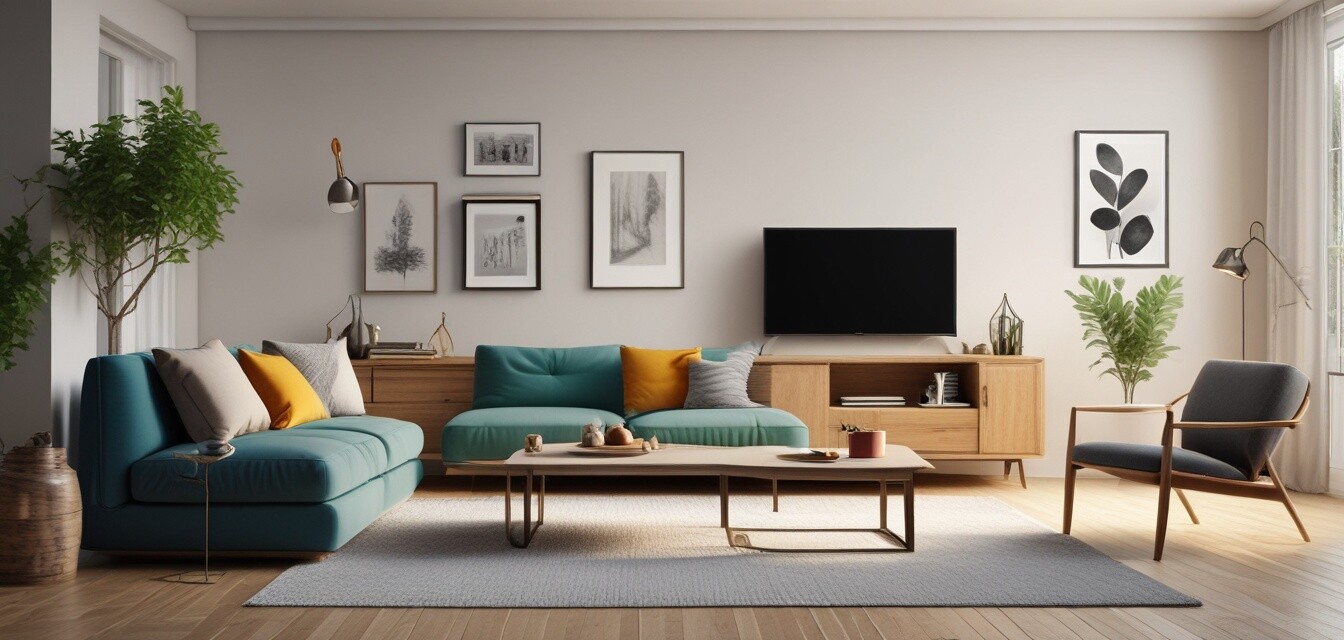
Designing a Kid-Friendly Eco-Home
Key Takeaways
- Creating a safe and sustainable environment for children is essential.
- Eco-friendly furniture options, like TV stands, can enhance children's safety.
- Natural materials and non-toxic finishes are important for eco-friendly living.
- Incorporating multi-functional furniture can maximize space and utility.
Creating a home that is both child-friendly and eco-conscious can seem like a daunting task. However, integrating sustainable practices into your home doesn’t have to be complicated. With some thoughtful planning, you can design a safe and nurturing space for your kids while being kind to the planet. In this article, we'll explore the essentials of a kid-friendly eco-home with a particular focus on furniture, including sustainable options like TV stands.
Choosing the Right Sustainable Materials
When it comes to selecting furniture for your home, it's vital to choose items made from sustainable materials. Some options include:
- Bamboo: Highly renewable and grows quickly, making it an eco-friendly choice.
- Reclaimed wood: Using old wood reduces waste and adds a unique character to your furniture.
- Metal and glass: Durable materials that can be recycled and refashioned without sacrificing quality.
What to Avoid
- Furniture made from particleboard or MDF, which often contains toxic adhesives.
- Items with high-VOC finishes, which can emit harmful chemicals into the air.
- Plastic furniture that doesn’t biodegrade and adds to landfills.
Kid-Friendly Furniture Options
Incorporating kid-friendly furniture is crucial in a home designed for active children. Here's a look at diverse furniture types that align with eco-friendly principles:
| Type of Furniture | Benefits | Eco-Friendly Features |
|---|---|---|
| Wooden TV Stands | Durable and stylish, often customizable. | Made from sustainable woods or reclaimed materials. |
| Modular Shelving | Grows with your child; adaptable to various spaces. | Crafted from sustainable materials and designed for longevity. |
| Convertible Furniture | Offers multiple uses, maximizing space efficiency. | Often made with sustainable practices in mind. |
| Soft Seating (Bean Bags) | Comfortable and non-toxic options available for safety. | Filler materials often made from recycled pellets. |
Safety First: Designing for Kids
Safety should be a priority when designing a kid-friendly home. Keep these tips in mind:
- Secure heavy furniture to the wall to prevent tipping.
- Choose rounded edges on tables and shelving.
- Ensure all finishes used are non-toxic and child-safe.
- Incorporate storage solutions to keep toys and safety hazards out of reach.
Eco-Friendly Storage Solutions
Smart storage helps to keep your living areas organized while promoting a sustainable environment. Consider:
- Natural Wood Baskets: Ideal for quick clean-up and crafted from sustainable wood.
- Recycled Fabric Bins: These add color and texture without compromising safety.
- Open Shelving: Allows for easy access to children's items while looking stylish.
Embracing Minimalism for Kids' Spaces
Minimalism can be very effective when creating children’s spaces. Here’s why:
- Less clutter can lead to reduced distractions and stress.
- Emphasizes quality over quantity, enhancing mindful purchases.
- Encourages children to appreciate their belongings more.
Smart Design Ideas
Here are some innovative design ideas that make the most out of available space while being eco-friendly:
- Under-Bed Storage: Utilize the space under beds for eco-friendly storage solutions.
- Wall-Mounted Desks: Space-saving and functional for study areas, created from reclaimed materials.
- Multi-functional Furniture: Benches that double as toy boxes or ottomans with hidden storage.
Building Awareness and Eco-Responsibility
Teaching your children about the importance of sustainability can set a strong foundation for their growth. Here’s how:
- Discuss the source of your furniture and the importance of sustainable materials.
- Involve them in recycling and waste management practices.
- Encourage them to select or plan DIY eco-projects.
Conclusion
Designing a kid-friendly eco-home is a fulfilling journey that combines creativity, safety, and sustainability. By making mindful choices, such as selecting eco-friendly furniture, you contribute to a healthier living environment for both your children and the planet. Explore more eco-conscious solutions and tips to enhance your home through our Eco-Friendly Living section. With thoughtful planning and an emphasis on sustainability, your home can be a nurturing and safe haven for your kids.
Pros
- Enhancement of children’s safety with the use of durable materials.
- Promotes a sustainable lifestyle for the whole family.
- Encourages creativity through multi-functional furniture.
- Teaches children important lessons about eco-responsibility.
Cons
- Initial cost may be higher for quality eco-friendly items.
- Limited options in some styles, depending on sustainability criteria.
- Requires consistent effort to maintain a minimalistic approach with children.